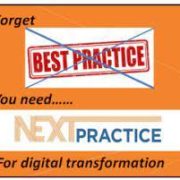This guest blog is by Karen Lippe who is a consulting partner with Wild Oak Enterprises. As a veteran marketing technologist, Karen shares her view of the challenges of innovation within the corporate structure. ~ Peter
Innovation. For companies, especially those in tech, innovation defines a company. Throughout my years working in Silicon Valley, large companies seeking to become more innovative typically approach innovation creation using two distinct paths: innovation from inside (aka creating a skunk works-like division) and innovation outside (aka creating an autonomous subsidiary). Even with the brightest visionary creators, the smartest engineers, the savviest marketers and deep purse strings to support the corporate endeavor, the commercial results are marginal at best or the product is killed off before it goes to market. This begs the question: why haven’t more companies (I mean a lot more) been more successful with their investment of innovative products?
The answer is two-fold: first, they did not define what success was to begin with (if at all), and second, they used the wrong measurements to define the progress of the product or solution.
Defining success. Even with the best intentions, companies view innovation as a means to create a viable product or solution that would [you pick one: redirect … reinvent … boost … even save] the mother ship and create a more profitable path. Innovation is not a savior. Innovation is the opportunity to leverage the companies own DNA; assess its strengths and weaknesses; view innovative ideas with a new lens (preferably not rose colored); and if good timing is on your side, disrupt the entire market.
A former colleague, Geoffrey Moore, touches upon the idea of success and innovation in his new book, Escape Velocity. He lays out a smart systematic approach called the “The Hierarchy of Powers” that challenges organizations to look at the whole company from a success vector. As he drills down, he shares tools and models that set the stage for large companies to be innovation friendly and carve a path that will ultimately garner greater profits.
How do you measure the progress of an innovative product? Unfortunately new innovation typically dies before it comes to market. Whether using the inside or outside path mentioned earlier, companies with good intentions embrace an idea and run forward. To curate innovation from within a corporate environment a tipping point approach is recommended. Moore discusses tipping point execution as a means toward success. Simply described, step one establishes a model with set project indicators and metrics to measure progress, and step two, creates a milestone-based plan that is formulated working backwards from the desired end result. If a tipping point approach is not considered, innovators typically enter a vicious cycle of reselling the idea to senior management whereas the effort becomes defocused then dies. In addition, the tipping point methodology is quite versatile and can be applied to products entering markets where social media increasingly plays an influential role — tapping into peer communities. Peer group influence can push products in or out of favor and move the “why to buy” to the “I have to buy” tipping point.
To harvest ideas into successful and commercially viable products is always the challenge and undeniable hard work. If innovation remains the brass ring (what you grab) in technology companies then attaining innovation success is the Holy Grail (the ultimate quest).







